Review: Tamiya 1/12 Kawasaki Ninja H2R – Build Review
A Brief History
The Kawasaki Ninja H2 is a "supercharged supersport" class motorcycle in the Ninja sportbike series, manufactured by Kawasaki Heavy Industries, featuring a variable-speed centrifugal-type supercharger. The H2R with 310 horsepower and 326 horsepower with ram air, is the most powerful and fastest production motorcycle on the market. The H2R track-only variant has 50% more power than the fastest street-legal motorcycles, while the street-legal H2 has a lower power output of 200hp 210hp with ram air.
The Model
This is the 1/12 scale Kawasaki Ninja H2R made by Tamiya. Kit number 14131. This kit was released in late 2016.
Following the instructions is an easy task as these are the exploded-view diagrams with clear part numbers as well as the color suggestions for each one. This model starts with the assembly of the engine and the engine sub-assemblies. I did use a flat white primer on this and then went with an aluminum color as the base for the engine.
This is the frame for the model. I chose a lime green color as this is bright enough to stand out on the finished model. Unfortunately, about 90% of what's seen here will be hidden behind the body parts. What you see here are three stages. Primed, base paint colors, and then the gloss coat.
The engine mounted into the frame with little issues. The screws that hold the engine in place are extremely small. Make sure you have a VERY tiny phillips or flathead on hand for this. There are two of them that hold this in place. DO NOT lose one to the dreaded carpet monster as there are no extras included in the kit.
This is the stand assembly. There is a kickstand on this model, but this piece adds a little bit extra. Assembly of this was, again, with no issues. It's probably the simplest step in the entire kit. I chose to go with the frame color of lime green for this as I thing it will add to the overall effect.
I have provided a close-up of the front fork assembly. One must pay close attention during the installation of the brake rotors as there are two that are a bit different and they must be placed on the correct side. Not getting this correct will result in a slight misalignment of the wheel when the tire is on and inserted under the fender.
The fork installations is a relatively simple step. Again, using one of the long screws that are provided in the kit. These line up with little effort. However, do not over-tighten this if you want the forks to move for display purposes. Also, over-tightening may cause the screw to strip out causing it to not hold the forks in place. I found it easier to move the forks back and forth while tightening until there was just a slight bit of resistance.
I did run in to a slight issue in step 25. This is in regards to parts D-15 and D-16. These two parts were slightly warped out of shape. I don't know if this was a manufacturing defect or something caused during the shipping process. I did email Tamiya to make them aware of this. But, as you can see in step 26, these are quite an essential part of the construction. Well, with some extreme finagling and a slight bit of trimming I managed to get them to fit. I would suggest checking these parts first before even starting assembly in case you need to order a replacement.
In step 32 I found that part numbers A-15, A-16, A-25, and A-26 which need to go on to the main side cowls are a bit of an issue with getting them to line up correctly. I would suggest placing parts A-25 and A-26 on first, making sure that they are straight by aligning them with the rear part of the cowl, allowing plenty of drying time, and then adding parts A-15 and A-16. Try to use something like Tamiya extra thin and not a cyanoacrylate for this step to avoid crazing of the paint and/or plastic.
The Finished Model
I am including photos of the finished model, both shortly after completion and those after I mounted it to its display stand.
Thanks to IMODELER for giving me the chance to do this write up. As always, if you have ANY questions please feel free to ask and I'll do my level best to answer.

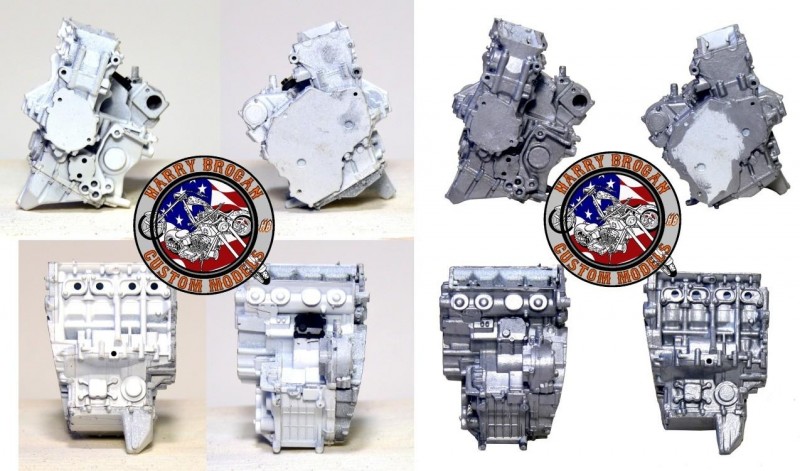


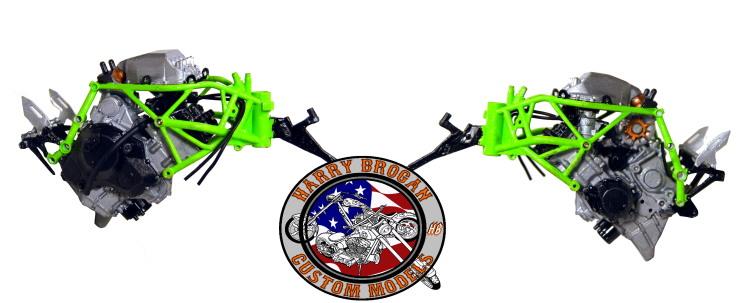
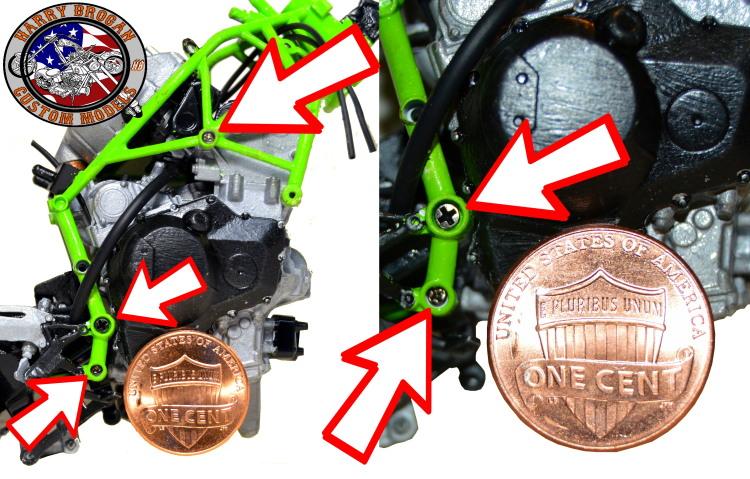
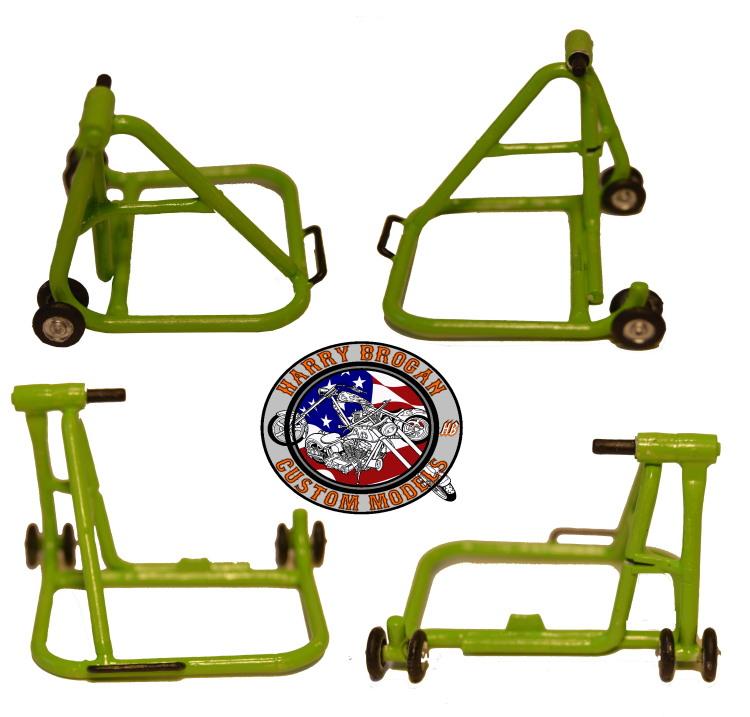
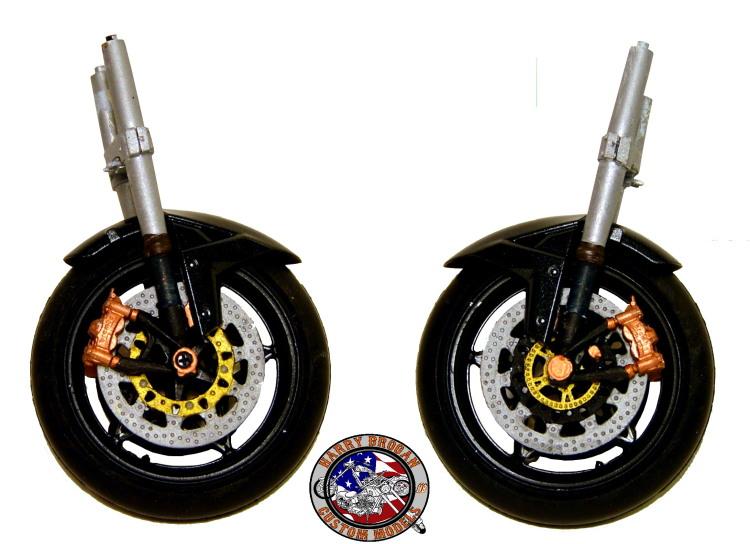

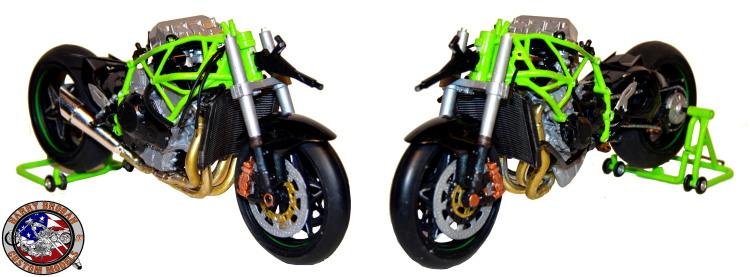
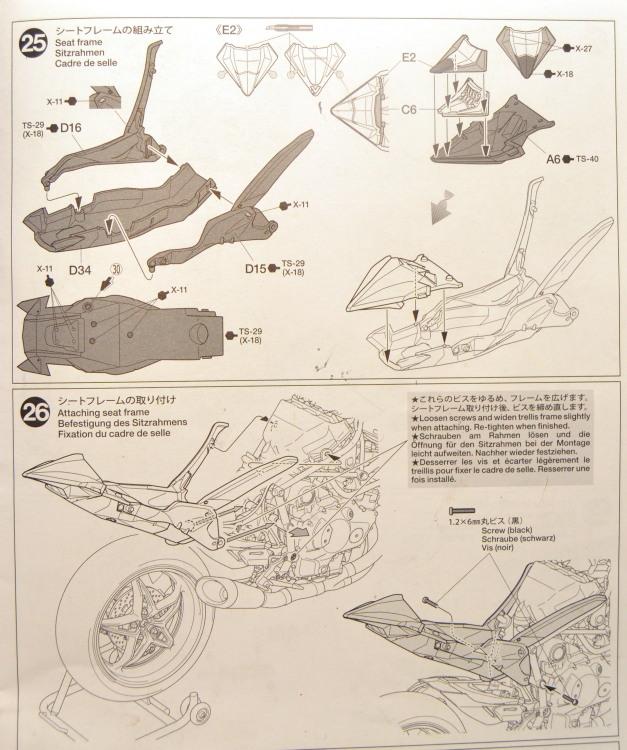


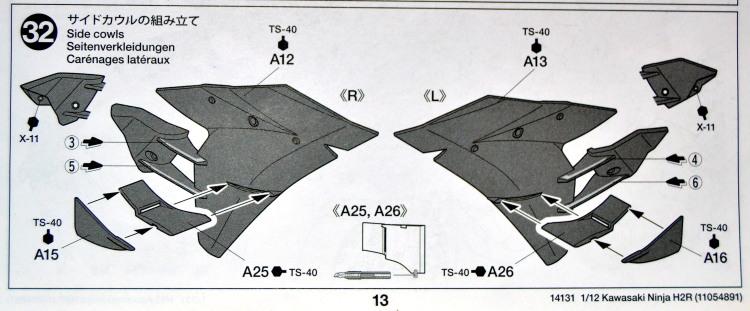



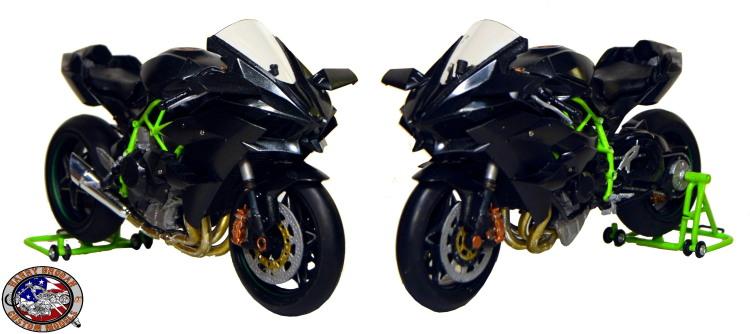
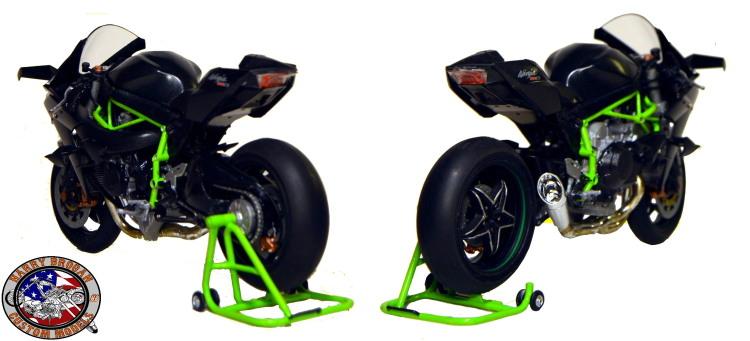



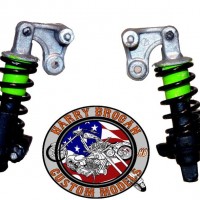

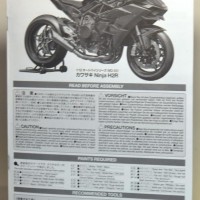
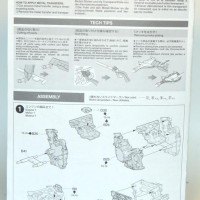
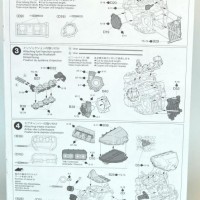

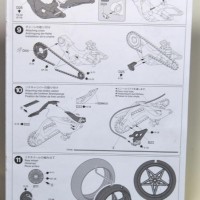
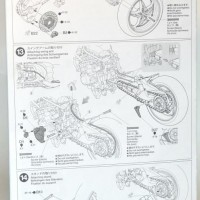


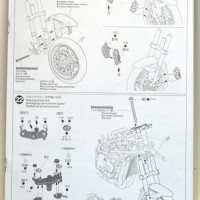
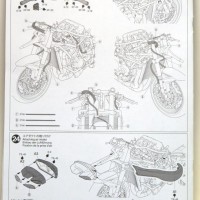
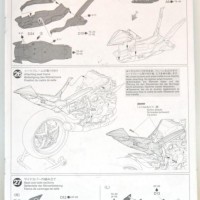
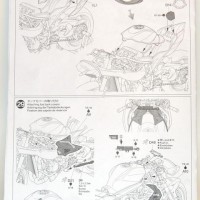
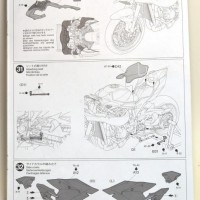

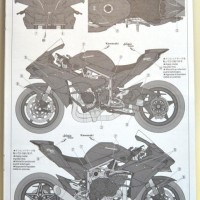


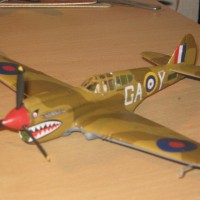

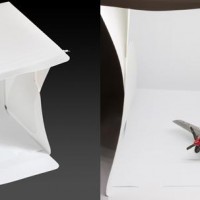
Another amazing piece of work, sir...your presentation is breathtaking!
Thank you!
love the build well done im yet to start mine ive just finished my 1/6 scale Tamiya katana soon as I get chance I will post some pictures
Beautiful work, Harry.
Thank you!
Very nice build of a seriously ugly bike, looks like something from a Transformers movie !
Correct me if I'm wrong but I thought the Suzuki Hyabusa holds the crown for fastest production bike.
Great work Harry,N.
Think the suzuki did around 185mph or so the h2r hits around 245 plus.
Think the more standard version hits just over 200mph but option available. Nice build Harry.
I always thought the Bus was good for 200mph.
Thanks!
Yes, that's the fastest production street legal bike out of the box. This particular model is NOT designed for street use. No headlight, turn signals, mirrors. Only a minimal tail light assembly.
Gorgeous!
Thanks!
Slick looking bike!
Thanks!
Great review and build, and finished off to your usual high standard. To me at least, Kawasaki Ninjas are lime green, so I'm glad you managed to sneak a bit of green into this build.
Yes, the Ninja has been lime green. Seems like that's been their signature color with this particular bike. The carbon fiber that was used on the real bike likely kept them away from doing that. So I guess that they chose to "sneak" it in on the frame. It does add a bit to the overall effect and sets off the black.
Great build Harry, that's give me a bit of inspiration to start building mine!
Very nice. Thanks for sharing
Fantastic ! great build !
I am going to start my Tamiya H2R Ninja build after I get my F/A-18F 1/48 from Hasegawa and my '65 Mustang 1/16 from AMT completed. I picked up the Kawasaki Green from Gravity Colors for my green frame. Looks like I am painting my stand that green too. Thanks for the idea Harry!